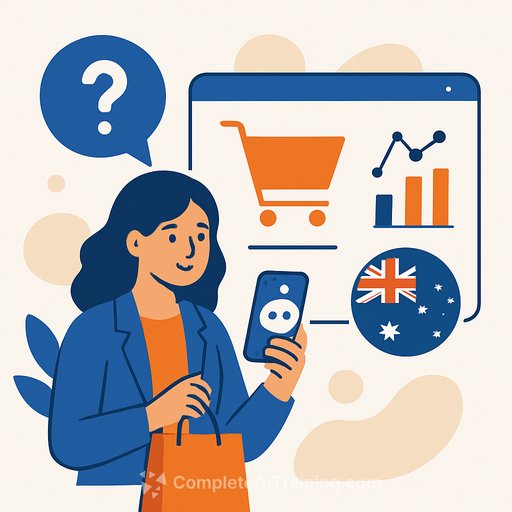ChatGPT Shopping Is Live: How Marketers Win in the Answer Economy
Shopping just moved inside ChatGPT. U.S. users can buy from Etsy via Stripe-powered Instant Checkout, with Shopify merchants next in line. A merchant ranking system now decides which products appear inside AI answers. Global rollout is close, and most brands aren't ready.
The Answer Economy: From Search Results to Single Answers
We're shifting from search-based commerce to AI-driven recommendations inside conversations. Research shows AI-referred customers deliver 4.4x to 23x higher value than organic search traffic because users trust concise, contextual guidance. In Australia, ChatGPT holds roughly 85% share among AI chatbots, so this impacts local e-commerce immediately.
New Competitive Dynamics: You're Competing Inside 3-7 Slots
ChatGPT typically surfaces three to seven products per query. That becomes your real competitive set, even if the brands aren't your traditional rivals. Ask for "eco-friendly activewear under $100" and you may see established labels beside fresh DTC players-ranked by the same criteria. Brands built for AI visibility win the click and the sale.
Natural-language queries now filter by specifics: ingredients, certifications, sourcing practices. Supply-chain transparency and third-party verification move from "nice-to-have" to baseline requirements.
How ChatGPT Merchant Ranking Works
OpenAI's merchant ranking system evaluates:
- Product availability
- Competitive pricing
- Quality indicators
- Primary seller status
- Instant checkout integration capability
The swing factor is external credibility. Recent analyses show most brand citations come from third-party sources-editorial coverage, customer reviews, industry certifications and awards. Owned website content accounts for a minority of citations. There's no paid placement yet. You earn visibility by being verifiably credible.
From SEO to LEO/GEO/AEO
SEO optimises for keyword rankings on results pages. AI commerce demands LEO/GEO/AEO-optimising for how language models evaluate, compare and recommend during purchase-intent conversations. The core moves are the same: structure your data and build external proof so agents can verify claims and recommend with confidence.
Immediate Actions for Australian Brands
1) Connect Your Merchant Feed
Apply to OpenAI's merchant program and ensure your product feeds meet technical specs for ChatGPT shopping. If you support Instant Checkout, validate your setup with your payments provider. Learn more about Instant Checkout options from Stripe here: Stripe Instant Checkout.
2) Audit Current AI Visibility
Check if your brand appears in relevant AI responses on key platforms:
- ChatGPT
- Google Gemini
- Perplexity
- Microsoft Copilot
Compare platform personalities. Is product info accurate? Are claims outdated, misleading, or damaging?
3) Restructure Content for Agent Evaluation
- Standardise attributes: ingredients, provenance, certifications
- Publish machine-readable structured data (e.g., schema.org/Product)
- Rewrite FAQs to match natural questions customers actually ask
- Treat every claim as evidence that must be verified
- Build third-party credibility: reviews, certifications and media coverage
4) Rework Post-Purchase Email Strategy
ChatGPT Instant Checkout does not pass customer emails to merchants for remarketing. Earn the opt-in with clear value:
- Warranty registration and tracking
- Refill and replenishment reminders
- Care and how-to libraries
- Loyalty benefits and early access
5) Measure AI-Native Attribution
Traditional web traffic matters less as buyers bypass your site. Track:
- Citation share in AI responses
- Inclusion rate for priority prompts
- Quality and diversity of source citations
- Duration of source influence in AI data
- Sentiment trends across citations and summaries
Credibility Is the New Conversion Rate
With ChatGPT dominant in Australia, first movers who ship merchant feeds and build external credibility now will bank compound visibility as shopping expands globally. The "digital shelf" isn't a page of links anymore-it's a single AI-generated answer built from structured data and third-party proof. If you want to be bought, you have to be believed-by the model and the buyer.
Want hands-on upskilling?
Your membership also unlocks:






